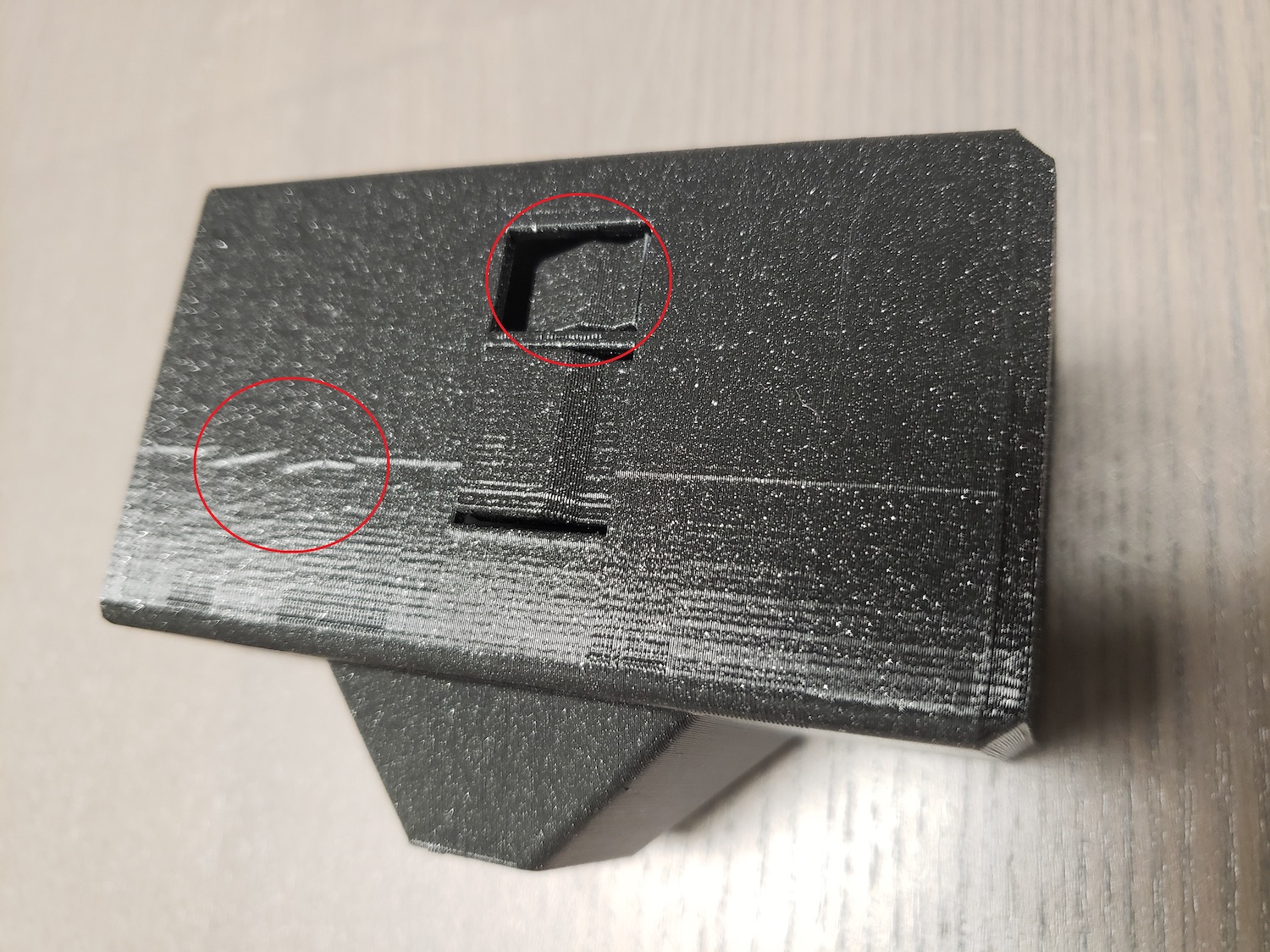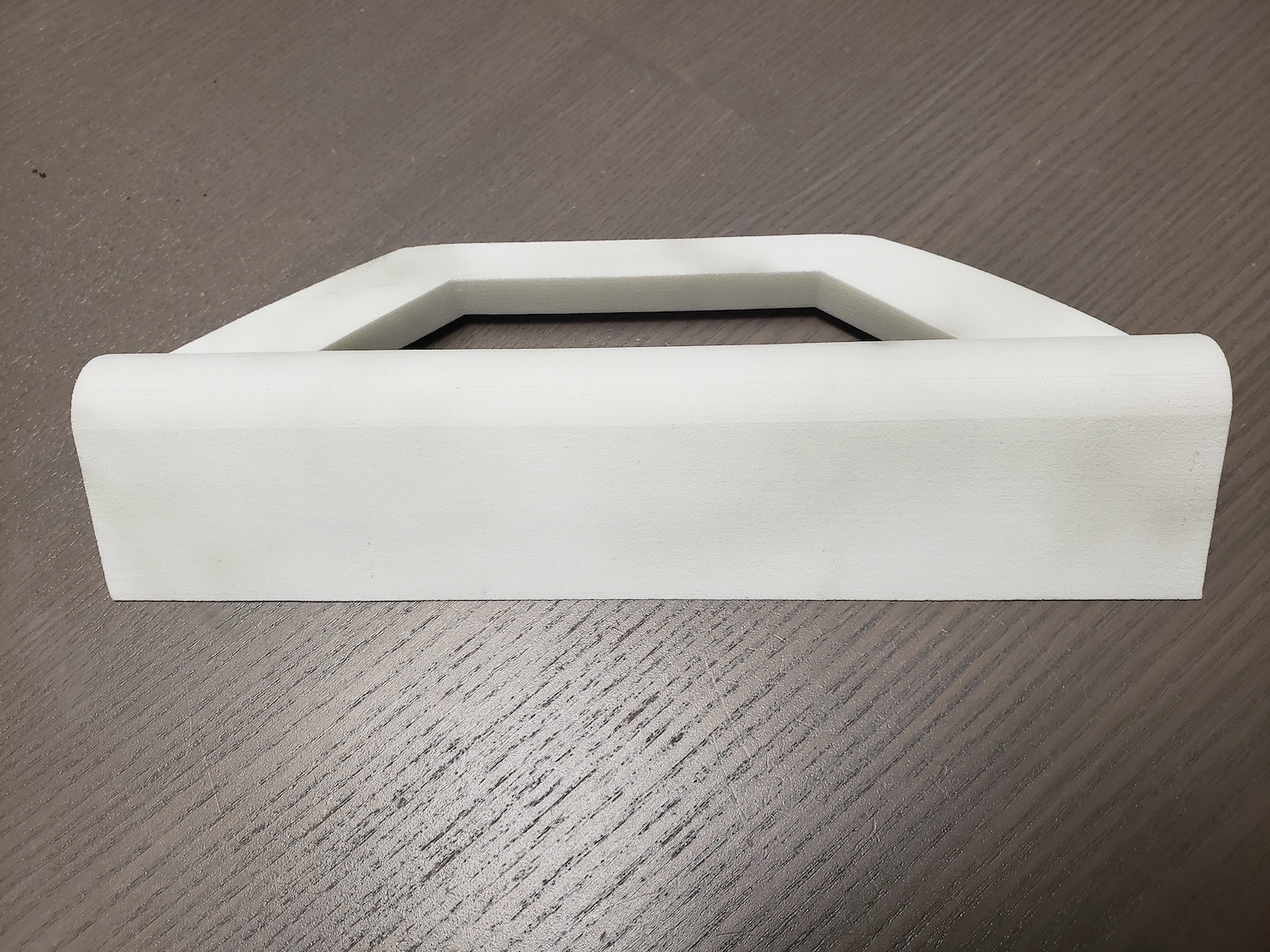
TrySight is the leading Canadian manufacturer of magnification and reading systems for those with sight loss, developing various hardware and software solutions to help those with low vision and blindness. Its clients include educational institutions, hospitals, and rehabilitation departments.
TrySight operates in a niche market where production runs are relatively low, 50 to 1000 units. Additionally, design changes to parts are frequent. The combination of low production volumes with frequent design iterations made traditional tooling methods uneconomical. Furthermore, the company needed a way to quickly run through design changes to validate product concepts.
To address these challenges, TrySight used FDM 3D printing technologies for more than five years, for prototype as well as production parts. However, the quality of the parts TrySight was producing with FDM did not meet dimensional tolerances, strength, or temperature resistance for end-use. Labor and material costs also were significant, due to high print failure rates and a two-dimensional build area that only allowed a few parts to be printed at a time.
The requirement for support structures on FDM parts required special considerations during the design process which was suboptimal. Furthermore, the parts lacked aesthetic appeal due to visible layer lines and resulted in a lower quality feel of the final product.
These limitations resulted in a low success rate for high-value institutional contracts, which cut into TrySight’s bottom-line and limited the overall growth of the business.
The Printer Comparison Showed a Clear Winner
TrySight had been searching for a better solution and decided to migrate its part manufacturing to selective laser sintering (SLS), a 3D printing technology that uses a laser to fuse thermoplastic powder to build parts. After six months of analysis and comparison with virtually all competing solutions, TrySight selected the MfgPro230 xS from XYZprinting, owing to its quality, compact size, and open materials ecosystem, as well as the best price and performance ratio on the market.
TrySight now designs its parts with very few design limitations because support structures are no longer required. Parts from the MfgPro230 xS are superior in virtually all aspects (tensile strength, temperature resistance, surface finish, etc.)
The ability to pack parts in three dimensions allows TrySight to manufacture dozens of parts per day with minimal failures, thereby reducing labor costs. Since components that are used for prototyping are also used for production, there is no design effort to move from prototyping to production. Changes can be made instantly and released into production within hours instead of weeks with zero setup cost.
The open materials philosophy of the MfgPro230 xS has allowed TrySight to experiment with third-party materials to expand its offerings. Flexible parts using thermoplastic polyurethane (TPU) allow for the manufacture of custom-fit wearable products, which is a capability not achievable by traditional manufacturing methods.
SLS Parts Rival Injection Molding, Cost Less
The MfgPro230 xS has taken TrySight’s business to the next level with professionally produced, short-run parts that rival injection molding with no tooling cost. Additionally, the ability to produce bespoke parts allows TrySight to offer clients custom fit parts in a variety of materials which provides a unique competitive edge.
Only three months after purchasing its first MfgPro230 xS, TrySight recouped 100% of its investment in the printer through an increase in product orders.
Subscribe to Our Email Newsletter
Stay up-to-date on all the latest news from the 3D printing industry and receive information and offers from third party vendors.
You May Also Like
Profiling a Construction 3D Printing Pioneer: US Army Corps of Engineers’ Megan Kreiger
The world of construction 3D printing is still so new that the true experts can probably be counted on two hands. Among them is Megan Kreiger, Portfolio Manager of Additive...
US Army Corps of Engineers Taps Lincoln Electric & Eaton for Largest 3D Printed US Civil Works Part
The Soo Locks sit on the US-Canadian border, enabling maritime travel between Lake Superior and Lake Huron, from which ships can reach the rest of the Great Lakes. Crafts carrying...
Construction 3D Printing CEO Reflects on Being Female in Construction
Natalie Wadley, CEO of ChangeMaker3D, could hear the words of her daughter sitting next to her resounding in her head. “Mum, MUM, you’ve won!” Wadley had just won the prestigious...
1Print to Commercialize 3D Printed Coastal Resilience Solutions
1Print, a company that specializes in deploying additive construction (AC) for infrastructure projects, has entered an agreement with the University of Miami (UM) to accelerate commercialization of the SEAHIVE shoreline...


































